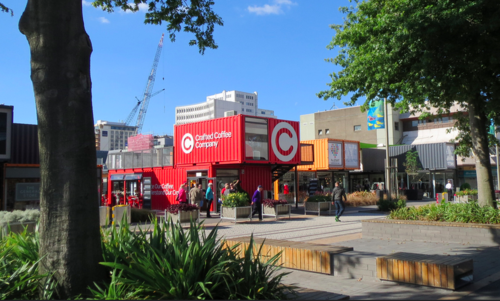
The theory that disasters are a window of opportunity refers to the potential presented during a post-disaster period to address the multitude of vulnerabilities that a built environment, urban area, community of people, etc. are exposed to. Post-disaster rebuilding and recovery provides an opportunity to deal with previously unrecognised or entrenched vulnerabilities.
What is the "window of opportunity"?
Where the built environment has been destroyed, and its design and build were inadequate to protecting the community, the disaster risk can be addressed from scratch.
Experience arising from the disaster event can be used to generate new knowledge from a broader group of stakeholders affected, and provided the community is widely consulted, improvements can be made that not only strengthen the built environment but also ensure that it is enhanced in such a way as to account for community preferences and needs.
Errors from the past can be addressed and remedied, and not repeated where the disaster is viewed as a window of opportunity. Disaster risk reduction strategies can be revived or implemented for the first time. Errors, mistakes and weaknesses that might be revealed and dealt with include: Corruption, weak institutional structures, inadequate provision for community needs, a failure to recognise and work with the nature-based services underpinning the built environment, insufficient funding/resources and a lack of attention to disaster planning.
Difficulties in acting on the window of opportunity
It must be recognised that while the opportunity exists, more than its existence is needed for it to be acted upon. The pressure to rebuild quickly, to return to normal relying on the old ways and political expediencies can mean that the mistakes are restored and the window of opportunity is missed.
It requires diligence, dedication and vision from NGOs, project managers, government officials, funders, community leaders and groups, etc., to constantly bear in mind the window of opportunity and to take ongoing action to implement better built and social outcomes throughout the recovery process. Ways in which this might occur include:
- Consulting with as wide a range of stakeholders as possible, including persons often forgotten or decided on behalf of, such as the disabled, lower socio-economic groups, women, youth, the elderly, etc.
- Giving people the reassurance that speaking out about failures of the past will not result in recriminations or be viewed as unprofessional or lacking in neutrality. Truths are important for a stronger and safer future.
- Having regular input sessions from the community and involving the community in redesign projects. This should include regular updates on progress.
- Avoiding the imposition of government-led wide scale solutions that fail to adequately account for community needs and wishes.
- Holding events at which people in the community can share ideas, leave ideas and show displays of the hoped-for changes in their built environment and community facilities.
- Ensuring adequate access to information, decision-making processes and review procedures for all members of the community. This may include providing resourcing and people to help community members make claims, submissions and suggestions. Website, wiki and social media updates should be used daily and extensively to alert people to the recovery progress and how they can continue to be involved in it.
- Preserving heritage where possible (provided it is not a continued endangerment) and respecting community rituals and attachment to place.
- Focusing on the longer-term resilience of the community, rather than short-term gains and competing priorities. Viewing the longer term, bigger picture purpose behind the recovery process can assist with seeing resiliency as incorporating a range of needs, rather than pitting differing vulnerabilities and needs against each other.
- Making disaster risk reduction an objective across all activities undertaken in recovery and mitigation stages.
- Showing how a more resilient built environment serves broader development and sustainability goals. Those who have a role in advocating this include project managers, NGOs, civil society organisations, community leaders and groups, faith-based organisations, indigenous people, health and welfare groups, academics, researchers, public administrations, small business, international agencies, etc.